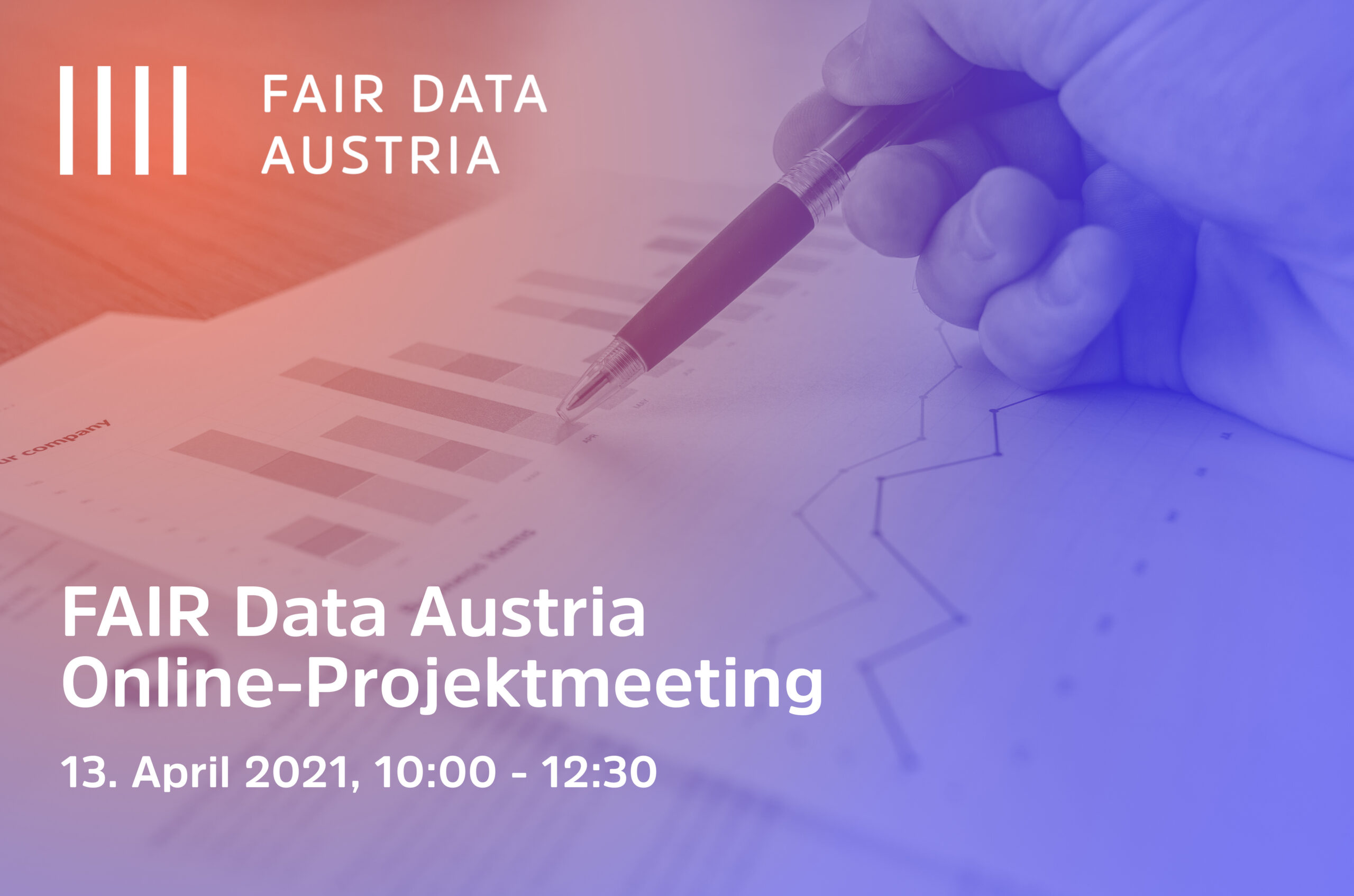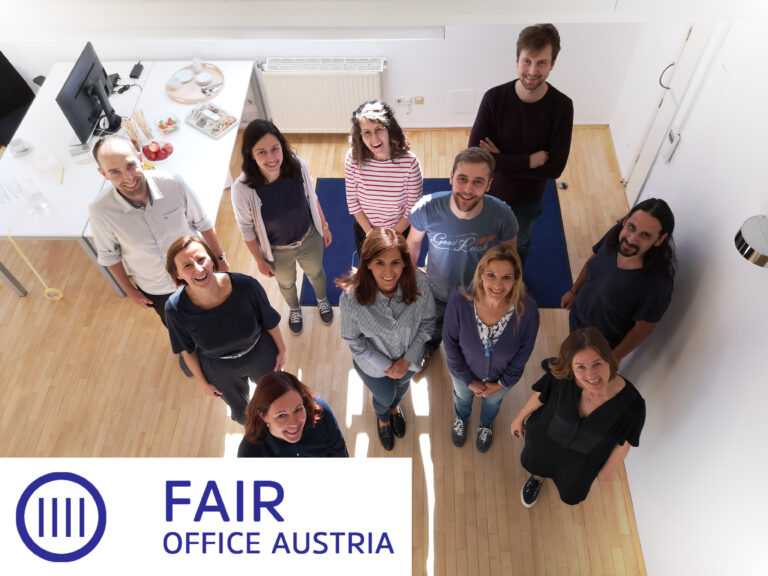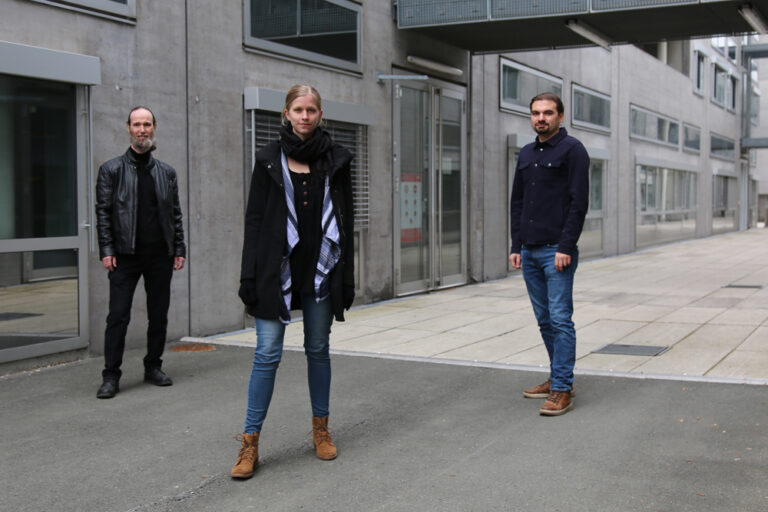On April, 13th 2021, the 2. Online Project Meeting (via WebEx) was held, to present the current result and the progress of the project in a publicly accessible session.
Key facts
Date: 13.04.2021 Place: Online (WebEx) Time: 10:00 a.m. to 12:30 p.m. Participants: 100 persons from 33 different national and international institutions, universities, research and funding organisations Organisers: Project coordination and “Handlungsfeld Forschung” of the “Digital TU Graz”
Summary
At the beginning, Ilire Hasani Mavriqi gave an overview of the activities of the FAIR Data Austria project and the associated challenges. Sabine Neff then presented the Cluster Forschungsdaten, highlighting the first results and achievements of RIS Synergy. This was followed by a presentation of Austrian DataLab and Services (ADLS) by Constanze Rödig, in which the realisation of an inter-university cloud infrastructure for data and computing applications in Austria is being advanced in research and teaching. The following presentations were dedicated to the latest developments in FAIR Data Austria:
- Tomasz Miksa presented the team behind DAMAP, the application that generates machine-actionable Data Management Plans (maDMPs), and also introduced the general idea behind it and its advantages, as well as the integration with other applications. Zeno Casellato then gave a live demo of the tool to demonstrate the current functionality and Ejmi Shkreli gave an insight into the implementation and customisation of the tool at TU Graz.
- Mojib Wali and Maximilian Moser presented the developments of InvenioRDM on the topic of Next Generation Repositories. TU Graz and TU Vienna are working together with the core-team at CERN to further develop this software solution. A live demo of the TU Graz repository, which is available for all researchers, and the outline of the developments at TU Vienna were of course the highlight of this part.
- In addition to the tools, RDM Training and Support services were also presented. Tereza Kalova first introduced the “RDM Training and Support” team and showed the current status of the inter-university training concept. Ilire Hasani-Mavriqi introduced the Data Stewardship Programme and presented the Data Stewards of TU Graz. The goals and developments of FAIR Office Austria, which serves as an information hub for FAIR data and services, were presented by Eva-Maria Asamer.
We are pleased about the great interest in FAIR Data Austria! We thank you for the numerous participation and feedback, and look forward to seeing you at our upcoming events!
Slides
Recordings
Opening, FAIR Data Austria and Cluster Forschungsdaten
Machine-actionable Data Management Plans
Q&A
maDMPs
- What about data from projects that are not listed in a database or are not third party funded – is choosing projects mandatory?
There are strict requirements at TU Vienna that projects must be registered in the project database – that’s why we focus on it in the first phase. There is a feature planned, that you can create a custom project which is not in the project database. Please keep in mind that the less you integrate with existing data sources, the less you can benefit from automation and pre-filling.
- Why do you have ‘available until’? Should it be rather ‘available from’. Thinking in terms of long-term preservation.
This is related to question on digital preservation: how long should the data be kept. Embargo periods are also in the tool.
- Will this tool also be available (and hosted) for Non-TU Vienna members or even non-academic institutions?
Source code will be available. The power of the tool lies in the close integration of the services of the institution where the researcher works. In principle, it is possible to offer a hosted version of the tool for everyone, but it will miss some features.
InvenioRDM
- Is the development of InvenioRDM at TU Graz and TU Vienna linked to general invenio? Or is it a decoupled fork?
Invenio 2 is used by Zenodo. InvenioRDM will become a future basis for Zenodo. The InvenioRDM instances at TU Graz and TU Vienna are independent. Our developers took part in sprints organised by CERN to help out with the development, hence we got a lot of under-the-hood knowledge that helps us in customising/developing our own systems. Both TU Graz and TU Vienna use the latest version of InvenioRDM and will be updating regularly.
- How will you ensure that only “valuable” data will be uploaded?
This depends on the workflows and polices defined and is work in progress. With the help of our Data Stewards we will define what are valuable data that can be archived.
- Are the repositories you are preparing meant as institutional repositories? I.e. only for members of TU Vienna or TU Graz? Or are they planned to be open to others as well?
TU Vienna: In the first phase only, the researchers of TU Vienna will be allowed to deposit the data, everybody will be able to view/download the data (depending on the access permission selected by the depositor).
TU Graz: We are planning to allow the access of members outside TU Graz. This will be helpful for collaboration projects.
Both universities are happy to share their knowledge with other institutions interested in setting up their own repository.
- Is it correct to say that this repository solution is rather an institutional one than an “Austrian” on?
The system itself is institutional, but we are building an Austrian community with developers and support staff. The collaborative implementation and exchange of knowledge makes it national.
- Have you considered to use some federated AAI system like EGI Check-In to allow the access of members outside your own institutions?
Authentication is a big topic and also relevant for other projects (including EOSC). When developing the repositories, we have to depend on what is available and on other projects. In the long term, we will develop a mechanism to allow for deposits from outside of the institution – we are aware of this requirement, but this requires broader collaboration and other developments.
- Will there be a central point of access or portal to search in the different IRs through one UI?
By minting DOIs, our systems submit metadata to Data Cite – thus the information on contents is transferred to major hubs. In turn, contents of our repositories should be easily findable on the internet, so for now there is no need for a central search portal. One of the next features on our list is the support of schema.org and google dataset search.




